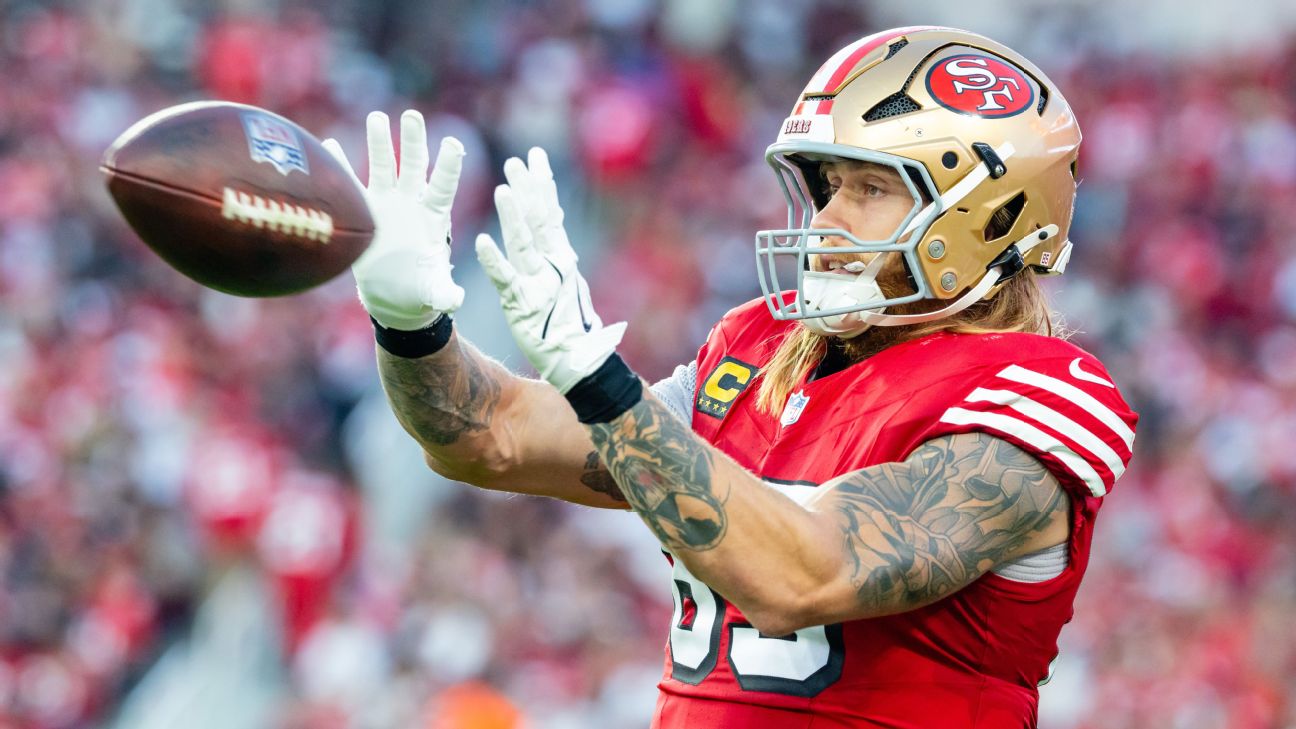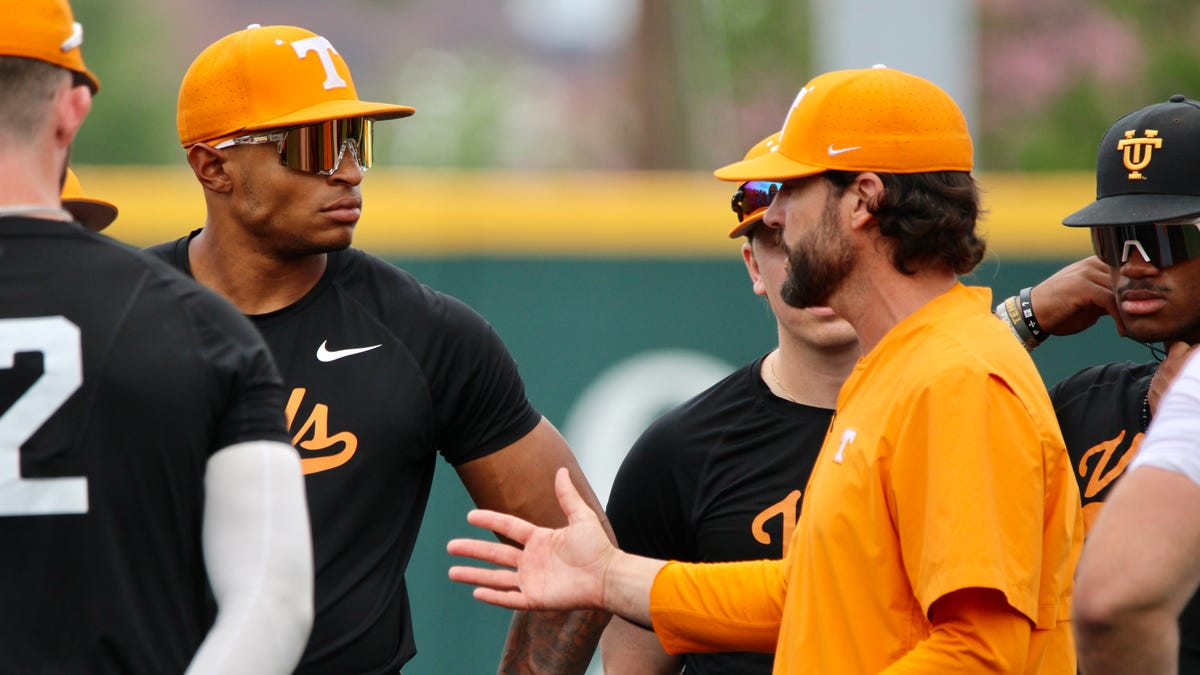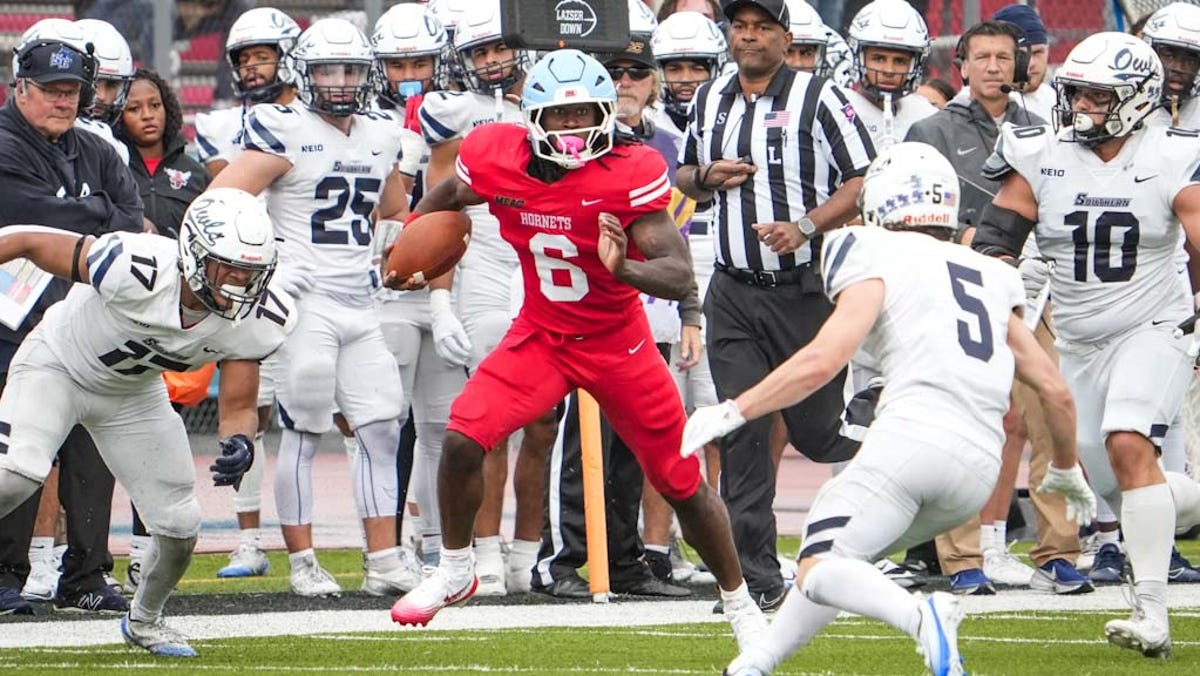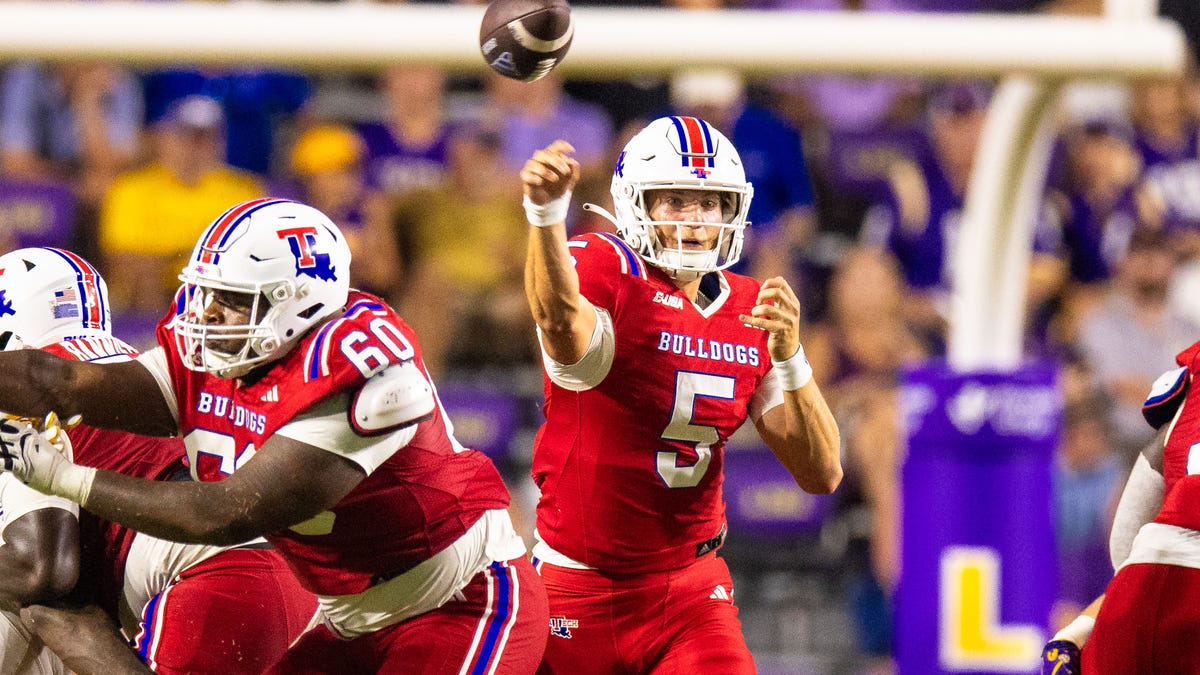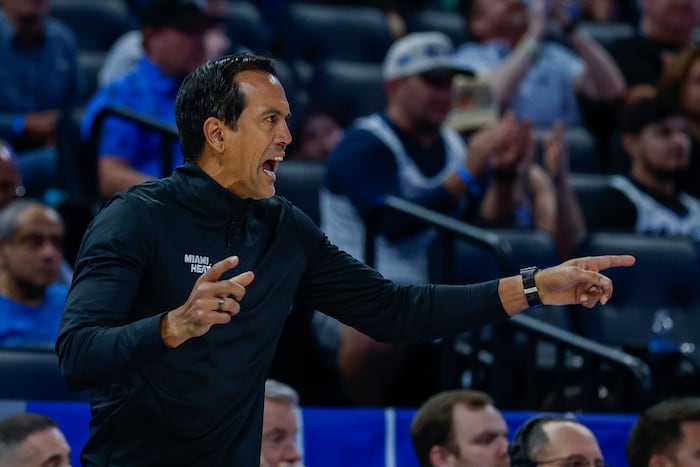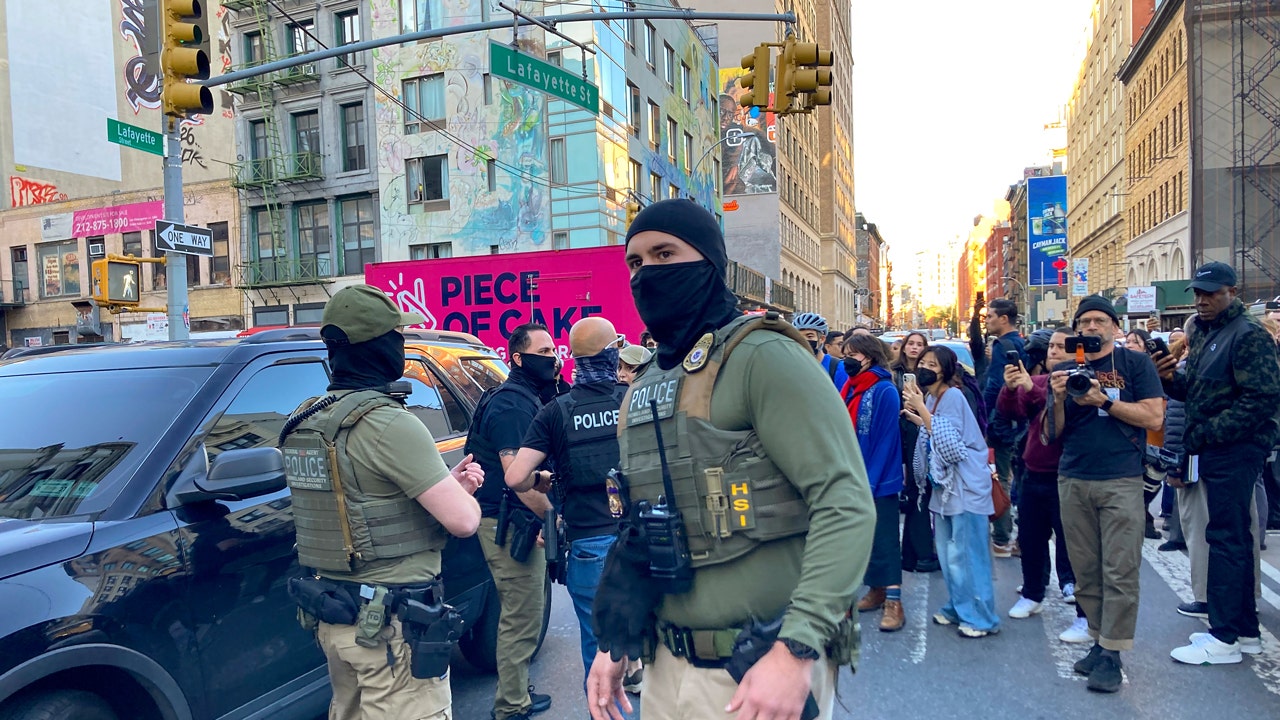Ohio
Ohio State-Michigan and the 20 most anticipated games in college football history
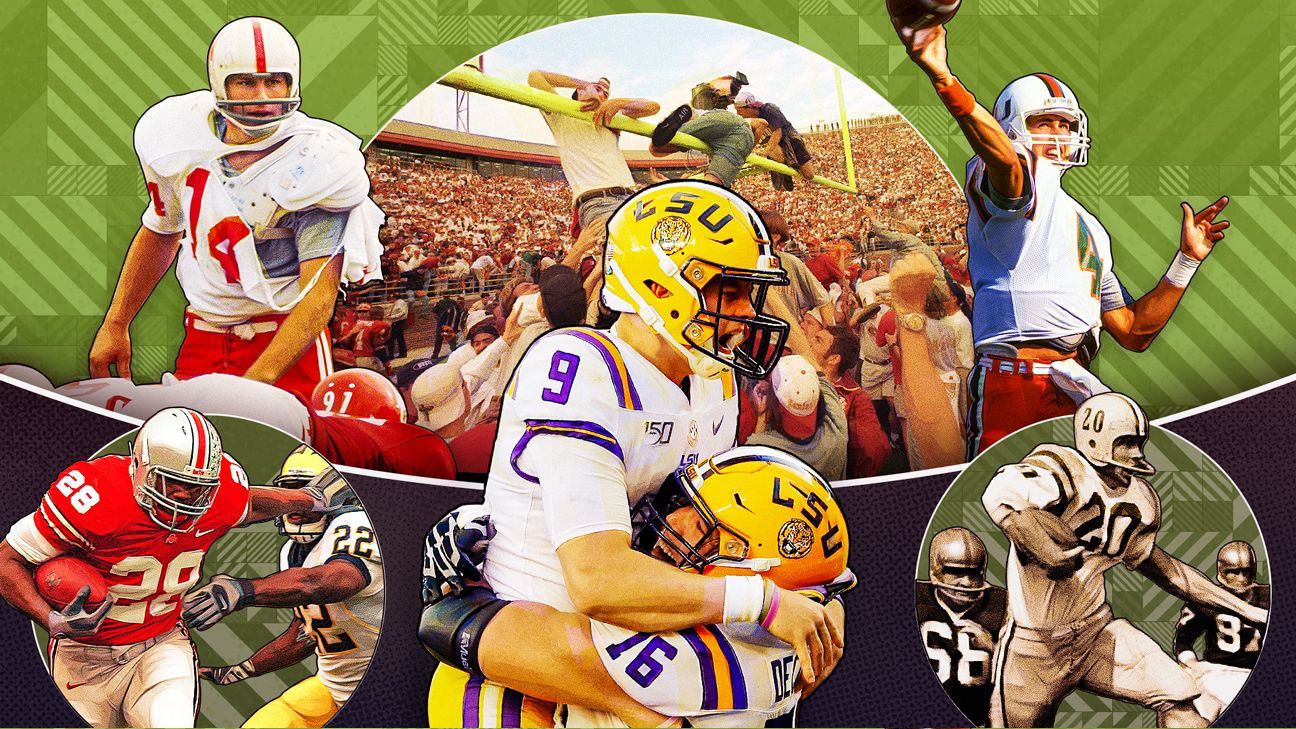
Accusations of spying. Counter-accusations of hiring private investigators. Counter-counter-accusations of … I don’t know … something. Michigan’s recent Spygate adventure, which got Wolverines coach Jim Harbaugh suspended for three games, has significantly ramped up what was obviously the most hostile and important game of the 2023 college football season — Ohio State at Michigan. The tension and intensity that followed a complete reversal in rivalry dynamics two years ago — when Michigan suddenly became the rivalry bully, winning two games by a combined 87-50 after losing 15 of the previous 16 — has been amplified by off-the-field shenanigans and message board warfare.
The fact that Harbaugh won’t be on the sideline adds an extra story line to a game that doesn’t need anything else. This was always going to be the biggest game of the season. In the more than two decades between 1997 and 2021, the Wolverines and Buckeyes met as mutual top-five teams just three times. They’re now doing it for the third year in a row. Ohio State heads into the game ranked second in the AP poll and was No. 2 in the most recent CFP rankings; Michigan is third in both. Michigan is first in SP+, Ohio State first in FPI. The winner is nearly assured of a spot in the College Football Playoff, and the loser will need lots of good luck to get there.
For about 117 different reasons, this one’s huge. It’s easily the most highly anticipated game of a 2023 season that featured quite a few big headliners. Is it one of the most anticipated games ever? To gauge that, we have to compare it to the best of the best.
College football has been producing high-stakes, battle-of-the-century type games since the start of its existence. As the hype around the sport itself grew, starting in the late-1920s and 1930s, the hype around its biggest games did, too. Going decade by decade, let’s look at some of the regular-season college football games that had the highest stakes, the most buildup and the most on the line. Let’s set the bar that Michigan-Ohio State has to clear. And let’s see how frequently these games actually live up to the billing. Here are 20 of the most anticipated games in college football history.
The background: Ohio State had built mighty Ohio Stadium in the 1920s and, by the mid-1930s, had built the mighty team to fill it. Coming off of a 7-1 season, the Buckeyes hosted college football’s marquee program, a Notre Dame team that was beginning to rebound after falling into a relative funk following Knute Rockne’s death. The Irish were 6-0, the Buckeyes 4-0; in the year before the AP poll came into existence, these teams might have been No. 1 and No. 2.
The game: It lived up to hype and then some. Ohio State took a 13-0 lead into the fourth quarter, but the Irish charged back. They scored to make it 13-12 in the final minutes, and while the Buckeyes recovered an onside kick, Notre Dame recovered a fumble near midfield. Andy Pliney bulled his way inside the Ohio State 20, suffering a career-ending injury in the process, then Bill Shakespeare threw a game-winning touchdown pass to Wayne Millner for an all-time comeback win.
1943: No. 1 Notre Dame Fighting Irish 14, No. 2 Iowa Pre-Flight Seahawks 13
The background: College football continued during World War II, but under relatively unique circumstances. A lot of programs fielded mainly freshman teams with upperclassmen enlisted, and many of the enlisted played on teams like Great Lakes Navy or any number of Pre-Flight teams in different states. The best of the wartime squads was the 1943 Iowa Pre-Flight team led by Missouri coach Don Faurot. They were 8-0 with a chance at a national title when they visited South Bend to face a loaded Notre Dame team. Thanks to an affiliation with the Navy, the Irish hadn’t suffered much roster drain. The 1943 team, in fact, featured both the eventual 1943 Heisman winner (Angelo Bertelli) and the 1947 winner (Johnny Lujack). This was a winner-take-all matchup.
The game: In front of 45,000, Faurot’s Seahawks led 7-0 at halftime. With the score 7-7, a Lujack fumble set up a Dick Burk score. Iowa missed the PAT. But however, Notre Dame took a late 14-13 lead that held up after a missed field goal and a late fourth-down stop.
1946: No. 1 Army Black Knights 0, No. 2 Notre Dame Fighting Irish 0
The background: Thanks again to wartime rosters and loosened eligibility rules, Army, Navy and Notre Dame fielded the best teams in the country in 1945. Army might have had the best team ever, though, and beat the Midshipmen and Irish by a combined 80-13. A year later, the Cadets still had back-to-back Heisman winners Doc Blanchard and Glenn Davis, but Notre Dame was ready for the challenge. Every major sportswriter in the country was among the capacity crowd of 74,121 at Yankee Stadium.
The game: Notre Dame coach Frank Leahy told the media he was predicting a 27-14 Army win. Whether that was earnest or a motivation tactic for his team, his projection was pretty far off the mark. Rainy conditions (and a Lujack injury) turned this into a rock fight — the teams combined for 10 turnovers and six turnovers on downs, and the tie ended up a win for Notre Dame: They would take the No. 1 spot in the final polls after a blowout of No. 6 USC.
The background: The 1950s saw regional powers sprout up, from Michigan State early to Oklahoma, during its famous 47-game winning streak, in the middle of the decade. But with interconference play limited by segregation, we didn’t get all that many marquee matchups. That changed in 1959, when the two best teams in the South peaked around the same time. LSU won the 1958 national title thanks in part to coach Paul Dietzel’s brilliant, multiplatoon system, but by 1959 John Vaught’s Rebels were ready to move from top-15 program to top-two. A chaotic, Halloween night crowd of 67,500 awaited in Baton Rouge.
The game: The Rebels might have had the best team in the country, but LSU had Billy Cannon, who won the Heisman that year. Ole Miss had chances but managed just a field goal before Cannon fielded a fourth-quarter punt at his 11.
Ole Miss’ last-gasp drive came up 1 yard short. The Tigers survived in an absolute classic.
1966: No. 1 Notre Dame Fighting Irish 10, No. 2 Michigan State Spartans 10
The background: They had 25 All-Americans and 10 future NFL first-round draft picks between them. Four Michigan State players would go in the top 8 of the 1967 NFL/AFL draft. Notre Dame had outscored eight opponents by a combined 301-28. The teams met in late-November in front of 80,011 fans and a national TV audience of 33 million. This might have been the Game of the Century … of the Century.
The game: Michigan State led 10-7 at halftime, but the Irish tied the score early in the fourth quarter despite an injury to quarterback Terry Hanratty. They got the ball one last time deep in their territory, but coach Ara Parseghian played things safe to avoid potential disaster, and they didn’t advance the ball far. Sports Illustrated’s Dan Jenkins, maybe the greatest college football writer ever, dryly raked Parseghian over the coals — “Old Notre Dame will tie over all. Sing it out, guys.” — but the pragmatism paid off when the Irish smoked USC and took the national title over MSU and unbeaten Alabama.
1967: No. 4 USC Trojans 21, No. 1 UCLA Bruins 20
The background: Led by new starting running back O.J. Simpson, USC bounced back from a 7-4 season in 1966 and, freshly named the No. 1 team in the country, stomped Notre Dame in South Bend. A shock loss to Oregon State dropped the Trojans to fourth overall and promoted UCLA, fresh off of a 48-0 humiliation of Washington, to No. 1. Bruins quarterback Gary Beban would beat out Simpson for the Heisman that year. This was the biggest game ever between two of the West’s defining programs.
The game: Early in the fourth quarter, Beban, battling a rib injury but on his way to 301 passing yards, connected with Dave Nuttall to give UCLA the lead, but a missed PAT made it only 20-14. That would loom large when Simpson bolted 64 yards for one of the sport’s most famous touchdowns.
It was a title-winning run. The Trojans would knock out Indiana in the Rose Bowl and finish No. 1.
The background: In terms of hype and anticipation, it’s hard to top “the president announces he’s attending the game and will declare the winner the national champion.” But Richard Nixon did just that (to the dismay of Joe Paterno and unbeaten Penn State). Billy Graham gave the pregame invocation. A record television audience watched at home. It was college football’s 100th birthday, and Fayetteville was the center of the universe.
The game: Arkansas took a 14-0 lead early in the third quarter, but two bold (and analytics-friendly!) decisions by Texas coach Darrell Royal turned the game. First, after a James Street touchdown run, Royal elected to go for two. They converted, making it 14-8. And after a Danny Lester interception prevented Arkansas from putting the game away, Royal elected to go for it on fourth-and-3 in Texas territory with about five minutes left. Street and Randy Peschel connected for 44 yards, Jim Bertelsen scored, Happy Feller made the go-ahead PAT and Tom Campbell made the game-clinching interception in the final minute. Texas was the champ.
The background: Nebraska and OU were clearly the two best teams in the country in 1971, outscoring 23 other opponents by an average of 29 points. The Sooners had the best offense in the country, and the Cornhuskers had the best defense. A packed house in Norman, and 55 million TV viewers at home, took this one in.
The game: One of the most famous plays in college football history — Johnny Rodgers’ epic 72-yard punt return — happened just four minutes into the game, and both teams tried their hardest to one-up that moment for the next 56 minutes.
First, the return:
That would pace an early 14-3 Nebraska lead, but OU charged back to steal a 17-14 advantage at the break. Then came the same dance: NU scores twice to go up 11, and OU scores twice to go up three. But a 33-yard run by NU quarterback Jerry Tagge set up Jeff Kinney’s game-winning touchdown with 1:38 left. Two sacks finished off the win.
1973: No. 1 Ohio State Buckeyes 10, No. 4 Michigan Wolverines 10
The background: The fifth game in what would be known as the Ten Year War between Woody Hayes’ Ohio State and Bo Schembechler’s Michigan was the closest and most bitter of them all. The teams entered the game a combined 19-0, and in front of 105,223 fans, then an NCAA record, Ohio State set the tone before kickoff, attempting to tear down the M Club banner Michigan’s players ran under.
The game: Somehow the game topped that buildup. Ohio State took command with a 10-0 halftime lead, but Dennis Franklin’s 10-yard, fourth-down score tied it in the fourth quarter. Franklin was hit and injured on a late drive, but the Wolverines still got opportunities to try a couple of long field goals. Mike Lantry barely missed them both, from 58 and 45 yards, and after the tie, with Franklin’s injury looming large, Big Ten athletic directors voted for Ohio State to attend the Rose Bowl. Schembechler never got over it.
1987: No. 2 Oklahoma Sooners 17, No. 1 Nebraska Cornhuskers 7
The background: By the late-1980s, college football’s balance of power was starting to shift south, toward Miami and Florida State. But while Miami would eventually win the national title in 1987, Barry Switzer’s Sooners and Tom Osborne’s Cornhuskers were the shining lights late in the season. They were a combined 19-0 and ranked 1-2 when OU trekked up to Lincoln on Nov. 21. But with quarterback Jamelle Holieway and fullback Lydell Carr both injured — and with OU coming off of a narrow 17-13 win over Missouri — the Sooners looked vulnerable. After so many close calls, this was another golden opportunity for NU to win Osborne a national title.
The game: OU defensive end Darrell Reed summed it up to the media after the game: “We played a basic offense and a basic defense, and they got a basic butt-kicking.” Fill-in QB Charles Thompson rushed for 126 yards, two other Sooners backs hit triple digits, and two third-quarter scores, including a 65-yard burst from Patrick Collins, charged a 17-7 Sooner win.
1988: No. 4 Notre Dame Fighting Irish 31, No. 1 Miami Hurricanes 30
The background: Defending national champion Miami headed up to South Bend to face the first elite Notre Dame team since the 1970s. “Catholics vs. Convicts.” A fight in the tunnel before the game. It was the stuff 30-for-30s were made for https://www.espn.com/watch/player/_/id/3216512.
The game: It was also the stuff instant replay was made for. With Miami down 31-24 and facing a fourth-and-7 midway through the fourth quarter, an apparent Cleveland Gary touchdown was ruled a fumble on the field, and Notre Dame recovered. Then, with under a minute left, Miami’s Andre Brown was given a touchdown even though replay showed he never controlled the pass. But all the controversy led to a classic ending: Pat Terrell breaking up Steve Walsh’s 2-point pass attempt.
The Irish held on and won the national title 2 months later.
1989: No. 2 Colorado Buffaloes 27, No. 3 Nebraska Cornhuskers 21
The background: The “rising upstart has to conquer a blueblood to get all the way to the top” genre of big game is one of my personal favorites. The buzz it can create is almost unparalleled. We needed one on this list, and the Colorado-Nebraska rivalry of the late-1980s might have been the best example of it. (Another candidate: Kansas State-Nebraska a decade later.) Bill McCartney had slowly built a powerhouse in Boulder and had pulled a shocking upset to get the Huskers’ attention in 1986, but now the 8-0 Buffaloes harbored national title hopes, and 8-0 NU stood in the way.
The game: The teams traded big-play touchdowns early (including the greatest “option pitch many yards downfield” maneuver you’ll ever see), and CU took a 24-14 lead after a controversial pass interference call in the third quarter. It was 27-21 when CU made a fourth-down stop, then batted down a Hail Mary attempt to prevail.
The background: This was the most hyped game of the most hyped rivalry in the sport at the turn of the 1990s. The Noles began 1991 at No. 1 after four straight top-five finishes, and they were 10-0 with two wins over top-10 teams (Michigan and Syracuse) by a combined 52 points. But other than a close call against Penn State, the 8-0 Hurricanes had been equally dominant. The New York Times called this the most anticipated game since 1971 NU-OU.
The game: Miami went ahead early, but FSU blanked the Canes for the next three quarters. The Noles settled for a number of field goals while taking a 16-7 lead, and Miami cut the lead to 16-10 in the fourth quarter. A 1-yard plunge by fullback Larry Jones made it 17-16 Miami with three minutes left, but after a fourth-down conversion and a pass interference penalty, FSU got into field goal range.
It became Wide Right I.
1993: No. 2 Notre Dame Fighting Irish 31, No. 1 Florida State Seminoles 24
The background: After also losing via Wide Right II in 1992, FSU finally cleared the Miami hurdle in 1993, and Bobby Bowden seemed poised to finally win his first ring. But unbeaten Notre Dame was ready to win its second title in six years. The unbeaten Irish hosted the top-ranked Noles in their second-to-last regular-season game. It was a big enough game that, for the first time ever, ESPN’s “College GameDay” was on location for the proceedings. (“GameDay” has made just a few more trips since then.)
The game: FSU scored early, but Notre Dame went on a 24-0 run to take a commanding lead into the final 20 minutes. FSU charged back, cutting the lead to 31-24 and getting the ball back in the closing seconds. But on the final play of the game, Shawn Wooden broke up a Charlie Ward pass at the goal line, and the Irish moved to No. 1…
…until the very next week, when they were upset by Boston College. FSU won out and took the national title.
1996: No. 2 Florida State Seminoles 24, No. 1 Florida Gators 21
The background: With Miami fading, Bowden found a new chief rival within the state. Steve Spurrier’s ascendant Gators had enjoyed five straight top-10 finishes and played for the national title the year before, falling to Nebraska. The Noles and Gators were a combined 20-0 and occupied the top two spots in the polls heading into Thanksgiving weekend. The winner was guaranteed a shot at the national title. Huge. Very huge.
The game: “If we didn’t have the best defense in the country,” Bowden said after the game, “we don’t win.” FSU knocked eventual Heisman winner Danny Wuerffel around all game (legally and illegally) and limited him to 23-for-48 passing with three picks. The Seminoles surged to an early 17-0 lead, and it just barely held up. Florida’s Bart Edmiston missed a late field goal wide right, and FSU survived.
Florida didn’t have to wait long for revenge, however. The two teams were paired in the Sugar Bowl, and the Gators blew out the Noles to secure their first title.
2001: No. 3 Nebraska Cornhuskers 20, No. 2 Oklahoma Sooners 10
The background: OU disappeared into the wilderness for part of the 1990s, and Oklahoma-Nebraska lost some luster. But when Bob Stoops’ Sooners surged back into national prominence, so did this rivalry. OU won a surprise national title in 2000, and the Sooners had won 20 games in a row when they traveled to Lincoln. NU, meanwhile, had soon-to-be Heisman winner Eric Crouch and a typically dominant Blackshirts defense.
The game: Nothing came easily for either offense in this one. The Sooners outgained the Huskers but were undone by negative plays and turnovers, and the score was 13-10 when Nebraska opened things up with some fourth-quarter trickeration.
Crouch’s long catch and run gave Nebraska a comfortable lead in an uncomfortable game, and despite a late-season loss to Colorado the Huskers would go on to play for the national title. They were shellacked by Miami, however, and haven’t been back to the promised land since.
2006: No. 1 Ohio State Buckeyes 42, No. 2 Michigan Wolverines 39
The background: When The Game is big, it just feels like the biggest thing in sports, and in 2006 the Buckeyes and Wolverines had their first ever 1-versus-2 matchup. The teams were absolutely loaded, boasting six consensus All-Americans between them. And on top of everything else, Bo Schembechler died the day before the game, creating an almost unfathomable layer of emotion around the proceedings. The Game drew 105,708 in Columbus and boasted the highest regular-season TV ratings since 1993 FSU-Notre Dame.
The game: These two defenses were outstanding, but the offenses were even better. Michigan scored early, but a 21-0 run helped to give the Buckeyes a 14-point halftime lead. The Wolverines kept charging, but Ohio State kept responding. When Michigan cut the lead to 28-24, Antonio Pittman scored on a 56-yard run. When U-M cut it to 35-31, Brian Robiskie scored. Michigan scored one last time, but Ted Ginn Jr. recovered an onside kick, and the top-ranked Buckeyes prevailed. They couldn’t match these emotional heights in the BCS championship, however, getting blown out by No. 2 Florida.
The background: At the turn of the 2010s, the college football world belonged to the Southeastern Conference. An SEC team won every title from 2006-12 as part of a larger run of 14 titles in the past 20 years. And you could say that the SEC’s aura was never stronger than it was for this game, which pitted two teams with 49 future pros in front of 101,821 and CBS’ largest regular-season TV audience in 22 years.
The game: Over time, an impression has formed that this was an unwatchable rock fight. Absolutely not. The rematch, a dire 21-0 Bama win in the BCS championship, was, and the ratings for that one were poor enough that it finally got us a playoff. But despite the low score, the original meeting was a classic. Alabama constantly threatened on offense, but with help from four missed field goals (OK, that part wasn’t great), LSU constantly held the Tide at bay before winning — via field goal, naturally — in OT. A classic of its own kind.
2016: No. 2 Ohio State Buckeyes 30, No. 3 Michigan Wolverines 27
The background: Jim Harbaugh has been Michigan’s coach for nine years, but he’s packed in about three decades’ worth of plots and story arcs. Before a seven-year losing streak to Ohio State really took root, before the back-to-back CFP appearances flipped his reputation 180 degrees, and before Spygate muddied the waters all over again, he was a second-year head coach achieving huge things at his alma mater. The Wolverines hadn’t been in the top 10 in nine seasons before they began 2016 at 10-1, and a win over Ohio State would get them to within one game of a first CFP appearance.
The game: It came down to The Spot.
Michigan’s 17-7 third-quarter lead almost held up, but the Buckeyes sent the game to overtime with a last-second field goal and won it when, after this spot went the Buckeyes way, Curtis Samuel scored from 15 yards out.
2019: No. 1 LSU Tigers 46, No. 2 Alabama Crimson Tide 41
The background: Heading into 2019, Alabama and Clemson had split the past four national titles, playing four times in the CFP in the process. Oklahoma was typically good to make a brief appearance too. We needed a little bit of variety. Ed Orgeron’s LSU Tigers obliged. Fielding one of the best offenses we’ve ever seen, they beat three top-10 teams during an 8-0 start, but surely beating Mighty Bama in Tuscaloosa was too much to ask, right? Another crowd of 101,821 plus CBS’ biggest regular-season audience since the 2011 LSU-Bama game, sure wanted to find out.
The game: All the stars came out to play. Joe Burrow threw three touchdown passes and Tua Tagovailoa threw four. LSU’s Clyde Edwards-Helaire scored four times, and Bama’s Najee Harris and DeVonta Smith each scored two. Fourteen points in 20 seconds allowed LSU to take a 33-13 halftime lead, but Bama cut it to one score three separate times in the fourth quarter. It wasn’t over until Justin Jefferson recovered an onside kick with 1:21 left.
LSU’s monotony-breaking continued as the Tigers rolled to 15-0 and won the national title.

Ohio
THC gummies at some Ohio dispensaries recalled for mislabeling

(WJW) – The Division of Cannabis Control has recalled some THC gummies sold at dispensaries across Ohio, state officials announced on Tuesday.
The DCC issued a Class II Product Recall for some batches of Kiva Lost Farms Cannabis-Infused Pectin Gummies after learning that servings weren’t labeled with the universal THC symbol, the Ohio Department of Commerce said.
“A product recall was determined to be the most appropriate course of action, as a child accessing the product or another individual ingesting the product unaware it contains THC could result in adverse health consequences,” state officials said in the recall.
The recalled gummies, manufactured by Klutch Processing, LLC, were sold at many Ohio dispensaries, including locally, between Jan. 14, 2025 and Oct. 21, 2025.
They were listed under the following product names:
- Kiva Lost Farms Cannabis-Infused Pectin Gummies – Island Punch Made With O43 Strain
- Kiva Lost Farms Cannabis-Infused Pectin Gummies – Thorny Berry Made With Violet Fog Strain
- Kiva Lost Farms Cannabis-Infused Pectin Gummies – Watermelon Made With Ice Cream Cake Strain
The Department of Commerce provided a breakdown of the recalled products and where they were sold:
License #
Business Name
DBA
City
CCD000013-00
Verdant Creations Newark
Sunnyside
Newark
CCD000015-00
The Forest Cincinnati, LLC
The Forest Cincinnati
Cincinnati
CCD000016-00
THE FOREST SANDUSKY, LLC
The Forest
Sandusky
CCD000024-00
Care Med Associates LLC
Sunnyside
Cincinnati
CCD000025-00
Greenleaf Apothecaries, LLC
The Botanist
Akron
CCD000027-00
Cresco Labs Ohio, LLC
Sunnyside
Wintersville
CCD000028-00
Herbal Wellness Center Jeffersonville, LLC
Herbal Wellness Center Jeffersonville
Jeffersonville
CCD000033-00
App1803, LLC
Herbal Wellness Center Columbus
Columbus
CCD000035-00
QUEST WELLNESS OHIO II LLC
Leaf Relief
Youngstown
CCD000038-00
Herbal Wellness Center Athens, LLC
Herbal Wellness Center Athens
Athens
CCD000043-00
Pure Ohio London LLC
Pure Ohio Wellness
London
CCD000048-00
Cannascend Alternative, LLC
Columbia Care
Marietta
CCD000050-00
Cannascend Alternative, LLC
Columbia Care
Monroe
CCD000051-00
Cannascend Alternative, LLC
Columbia Care
Dayton
CCD000052-00
Green Leaf Medical of Ohio II, LLC
Gleaf
Warren
CCD000059-00
Simple AG Ohio, LLC
Supergood
Ravenna
CCD000060-00
Heritage Wellness Ohio LLC
Story
Cincinnati
CCD000061-00
Jackson Pharm, LLC
Herbal Wellness Center
Jackson
CCD000064-00
Canoe Hill Ohio LLC
Queen City Cannabis Medical Dispensary
Harrison
CCD000072-00
Slightly Toasted, LLC
Bliss Ohio
Kent
CCD000073-00
Marimed OH, LLC
Thrive Wellness Dispensary
Tiffin
CCD000076-00
Pure Ohio Dayton, LLC
Pure Ohio Wellness
Dayton
CCD000082-00
FRX Health of Cuyahoga Falls LLC
FRX Health
Cuyahoga Falls
CCD000083-00
Citizen Real Estate, LLC
Klutch Cannabis
Canton
CCD000084-00
Citizen Real Estate, LLC
Klutch Cannabis
Lorain
CCD000085-00
Cascade Southern Ohio, LLC
Uplift
Milford
CCD000093-00
127 OH, LLC
Bloom Medicinals
Akron
CCD000096-00
SEO Natural Enterprises, LLC
Backroad Wellness
Cambridge
CCD000100-00
127 OH, LLC
Bloom Medicinals
Columbus
CCD000102-00
127 OH, LLC
Bloom Medicinals
Painesville
CCD000103-00
SEO Natural Enterprises, LLC
Backroad Wellness
New Boston
CCD000106-00
SEO Natural Enterprises, LLC
Backroad Wellness
Lima
CCD000109-00
Culture Retail Partners of Ohio, Inc.
Culture Cannabis
Akron
CCD000116-00
Curaleaf Cuyahoga Falls, LLC
Curaleaf
Cuyahoga Falls
CCD000117-00
Curaleaf Newark, LLC
Curaleaf
Newark
CCD000118-00
The Mavuno Group, LLC
Mavuno of Athens
Athens
CCD000120-00
Therapeutic Healing Care II, LLC
Ethos
Lebanon
CCD000133-00
Greenleaf Apothecaries, LLC
The Botanist
Columbus
CCD000135-00
Elevated Growth OH LLC
Elevated Growth
Columbus
CCD000141-00
Canoe Hill Ohio 2, LLC
Story of Cincinnati
Cincinnati
CCD000144-00
The Source Holding Ohio, LLC
Certified Dispensary
South Euclid
CCD000148-00
Ohio Bound Inc.
Locals Dispensary
Cincinnati
CCD000151-00
CV10B, LLC
Story Cannabis
Massillon
CCD000153-00
Grow Ohio, LLC
The Vault
Zanesville
CCD000154-00
Greenleaf Apothecaries, LLC
The Botanist
Solon
CCD000165-00
127 OH, LLC
Bloom Medicinals
Athens
CCD000197-00
AB Retail LLC
Roam Dispensary
Seven Hills
CCD000215-00
Herbal Wellness Portsmouth, LLC
Herbal Wellness Center Portsmouth
Portsmouth
CCD000216-00
RC Retail 2, LLC
Curaleaf
Westerville
CCD000218-00
Farkas Farms, LLC
Farkas Farms
Columbus
CCD000231-00
Columbia Care OH LLC
Columbia Care
Norwalk
CCD000232-00
ATCL2, LLC
Klutch Cannabis
Loudonville
CCD000244-00
Curaleaf OGT, Inc.
Curaleaf
Girard
CCD000248-00
Klutch Northfield, LLC
Klutch Cannabis
Northfield
CCD000253-00
Klutch Prospect, LLC
Klutch Cannabis
Cleveland
CCD000261-00
HWB Ohio, LLC
Story Cannabis
Dublin
There have been no reported illnesses tied to this recall.
The affected gummies have been placed on hold by the DCC. Anyone who purchased the recalled products can return them to the dispensary for a refund.
Learn more about this recall at the Department of Commerce’s website.
Ohio
THC gummies recalled in Ohio for not being properly marked
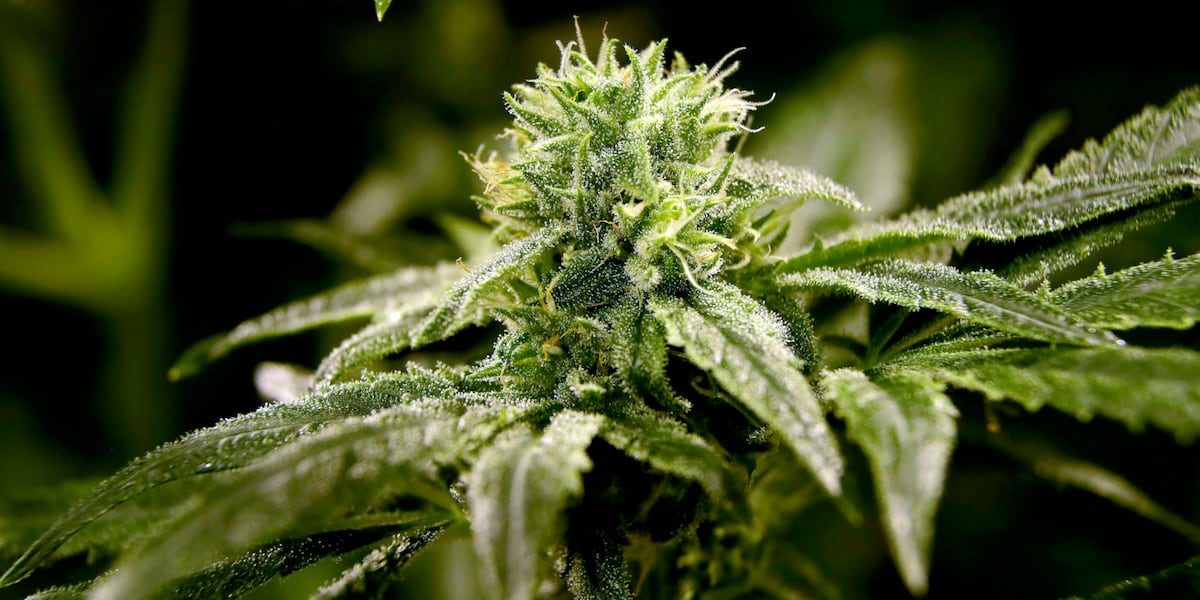
CLEVELAND, Ohio (WOIO)- The Ohio Division of Cannabis Control has issued a product recall for edible gummies made by Green Investment Partners, LLC.
The Division investigated a complaint that the affected gummies were not marked with a universal THC symbol on each serving.
The Division’s rules require the universal THC symbol on each serving; therefore, the products are not compliant.
The Division has placed a hold on all affected gummy products so that no additional products are distributed to or sold at dispensaries.
No adverse events have been reported. Anyone who experiences adverse health effects after consuming the affected product should contact their health care provider immediately and report the event to the DCC at 1-833-464-6627. The DCC will provide any updates, as necessary.
AFFECTED PRODUCT:
Product Name:
O’Dank Cannabis Infused Gummies – Pineapple
O’Dank Cannabis Infused Gummies – Sour Watermelon
Purchase Dates: September 5, 2025, to present
Processor Name: Green Investment Partners, LLC (License# CCP000024-00)
Product ID and Batch:

Affected Product Sold at the Following Dispensaries:

Copyright 2025 WOIO. All rights reserved.
Ohio
Ohio State’s defense is already elite, but these two players could make it even better

COLUMBUS, Ohio — Ohio State’s defense has been nothing short of dominant this season, but what’s scary for future opponents is that it might be on the verge of getting even better.
The latest episode of Buckeye Talk revealed two fascinating developments that could transform an already-elite unit into something truly unstoppable.
The first involves what Stephen Means described as “the ultimate good problem” at the nickel position. While Lorenzo Styles has been solid, Jermaine Mathews has shown flashes of being an elite playmaker who can dramatically change games with his ability to create turnovers.
“This is, I think, the ultimate good problem that a defense could have — where the guy who’s doing a job isn’t doing it poorly, but there just might be a guy who is elite, elite, elite at it,” Means said.
The option between Styles and Mathews represents the luxury Ohio State now has – two excellent players for one position, with Mathews offering a specific skill set that addresses one of the few areas where the defense could improve: creating more takeaways.
Co-host Stefan Krajisnik emphasized Mathews’ impact:
“I just think he’s such a difference-maker for you that if that’s the one thing you feel like this defense is lacking… I would continue to give Jermaine Mathews some snaps there in the slot.”
But perhaps the most intriguing revelation came from defensive end Kenyatta Jackson, who approached defensive coordinator Matt Patricia about being allowed more freedom as a pass rusher.
Jackson, who has been disciplined in his containment responsibilities against mobile quarterbacks, wanted permission to use his full arsenal of pass-rush moves.
Means highlighted the significance of this conversation:
“I also love the fact that he said that Matt Patricia’s response was like, ‘Yeah, just don’t go past quarterback… You can do whatever you want as long as you don’t put us at a disadvantage.”
This context explains why Jackson hasn’t been as statistically productive as many expected. Against more traditional pocket passers, Jackson could now be unleashed, complementing Caden Curry (who’s putting up numbers comparable to Chase Young’s Heisman campaign start) and creating a truly terrifying pass rush.
What we witnessed against Wisconsin – where Jackson registered three pressures and a sack after this conversation with Patricia – might just be the beginning. Ohio State’s defense is already allowing a minuscule 5.9 points per game, but these adjustments suggest the best is yet to come.
Here’s the podcast for this week:
If you purchase a product or register for an account through a link on our site, we may receive compensation. By using this site, you consent to our User Agreement and agree that your clicks, interactions, and personal information may be collected, recorded, and/or stored by us and social media and other third-party partners in accordance with our Privacy Policy.
-

 World2 days ago
World2 days agoIsrael continues deadly Gaza truce breaches as US seeks to strengthen deal
-

 Technology2 days ago
Technology2 days agoAI girlfriend apps leak millions of private chats
-

 News2 days ago
News2 days agoTrump news at a glance: president can send national guard to Portland, for now
-

 Business2 days ago
Business2 days agoUnionized baristas want Olympics to drop Starbucks as its ‘official coffee partner’
-

 Politics2 days ago
Politics2 days agoTrump admin on pace to shatter deportation record by end of first year: ‘Just the beginning’
-
Science2 days ago
Peanut allergies in children drop following advice to feed the allergen to babies, study finds
-

 News1 day ago
News1 day agoVideo: Federal Agents Detain Man During New York City Raid
-

 News2 days ago
News2 days agoBooks about race and gender to be returned to school libraries on some military bases
